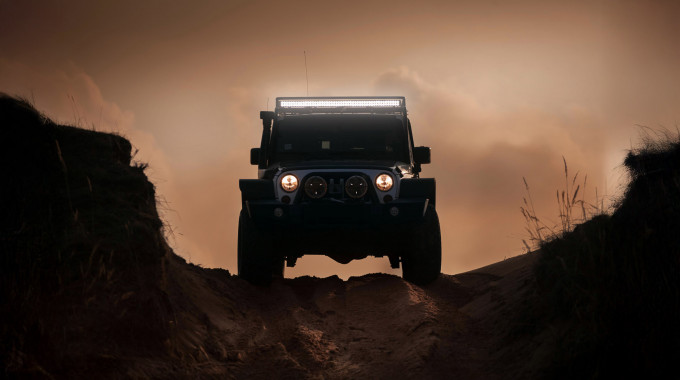
Car Safety Features [Part 2]: Safety in Reverse
Safety is important in every direction, but especially in reverse. Whenever you’re backing up, most of your focus is on what’s behind you, but there’s some distraction as you also mind what’s beside or in front of you.
In a parking lot, other drivers might be too busy looking for an empty spot, and won’t see you backing out. You have to watch for pedestrians, especially children that may run ahead without looking. Automakers have focused on these dangerous situations and offer a number of safety assist features to help. Here are some of them and how they work.
Rearview Camera
It’s been a federal requirement since 2018 that every new passenger vehicle sold in Canada must have a rearview camera. The camera comes on automatically when the transmission is shifted into Reverse. The image is usually displayed in the centre infotainment screen, but on a few vehicles, it may be in the rearview mirror. It must show the area directly behind your vehicle at a minimum, but many automakers use cameras with a wider view.
Most cameras are fitted to the exterior, such as above the licence plate or in the liftgate. This leaves them exposed to the weather, and they may not provide a clear view if they’re wet or dirty. Wipe the lens if it’s difficult to see the image. A few automakers hide the camera under a small door to keep it clean. The panel flips up to expose the lens when the driver shifts into Reverse.
The view may include grid lines, showing a straight path behind you to assist when parking. “Dynamic” grid lines move as you turn the steering wheel, and indicate how you should turn to get into the spot.
360-degree and trailer hitch camera for towing
Some automakers offer 360-degree cameras, often called “bird’s-eye,” either as standard or optional equipment. In addition to the rear camera, there are cameras in the grille and side mirrors. A computer stitches together all the views around a central rendering of your vehicle, as if you’re looking down on it from overhead, so you can see everything that’s around you.
Some can be activated with a button when you’re not in Reverse, and you can switch between the entire view or individual sides. Some pickup trucks have a camera that shows the trailer hitch, so you can guide the truck to the hitch by yourself; or a camera in the bed, so you can keep an eye on the load.
Below, an example of a rearview camera for towing in a 2019 Silverado, part of Chevrolet's Advanced Trailering System, Hitch Guidance with Hitch View which adds backing guidelines to the Rear Vision Camera system to help customers line up their hitch.

Photo: Chevrolet
Parking Sensors
In addition to the mandatory rearview camera, many vehicles include parking sensors. These use proximity sensors in the bumpers to determine how close you are to objects behind you – usually another vehicle, or a tall barrier or light pole. Many also detect pedestrians walking behind your vehicle. Some vehicles include parking sensors in the front bumper as well.
The sensors trigger an audio warning if you’re getting too close to an object behind. Most will beep intermittently as the gap closes, and then give you a continuous beep to stop. You may also get visual warning on the rearview camera screen, including a yellow line as you get closer, and then a red line when you need to stop.
While many vehicles now have emergency front braking, some also include emergency rear braking. If you don’t heed the warning beeps and get too close to an object, the vehicle will apply the brakes. Because it’s at low speeds, it will usually prevent a collision. Even so, you should never depend on it, and always pay attention.
Rear Cross-Traffic Alert (RCTA)
This system is usually bundled in with blind-spot monitoring, using the sensors that determine if another vehicle is alongside. If you’re backing out of a parking space between other vehicles, it can be difficult to see if anyone is driving in the aisle. These sensors detect traffic coming toward you, even if you can’t see these vehicles.
Here’s a quick 30-second video demonstrating how RCTA works:
The warning may be a light in or beside the mirror, as you get when your blind-spot monitor detects another vehicle; or a warning chime; or both. Some vehicles with a digital instrument cluster may flash a warning in the cluster.
The warning might also be a vibration in the steering wheel or seat. Some vehicles include emergency rear braking with the alert, and if you don’t stop for the warning, the brakes will automatically be applied.
Active Park Assist
An increasing number of vehicles are able to park themselves using this system. When activated, the system uses sensors to “look” for an open parking spot as you drive by, and indicates when it finds one that’s large enough. All of these systems will steer themselves into the spot.
Depending on the system, you may have to shift between Drive and Reverse; or operate the brake and throttle; or some vehicles may be able to do everything themselves. Some will also drive themselves out of the spot.
A few even let you get out and use the key fob to activate the vehicle to park itself or drive out, without anyone behind the wheel. These are among the stepping-stone systems to autonomous vehicles that will eventually drive themselves.
More content about







